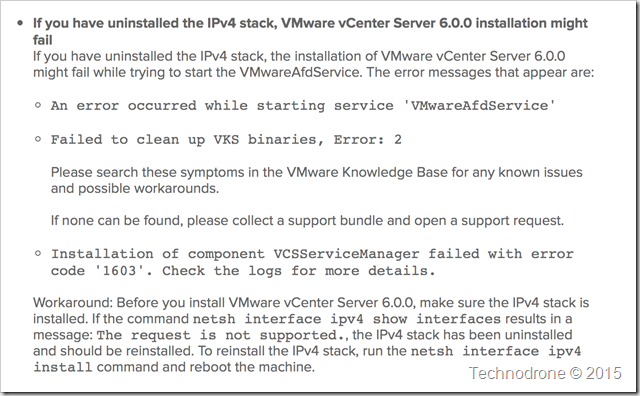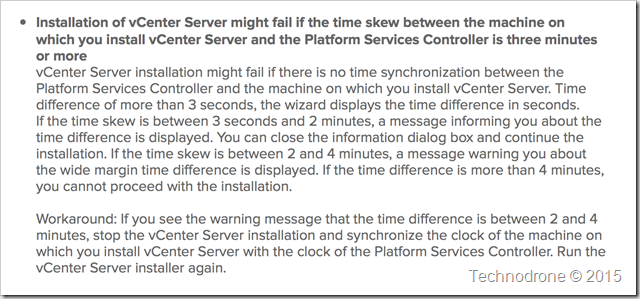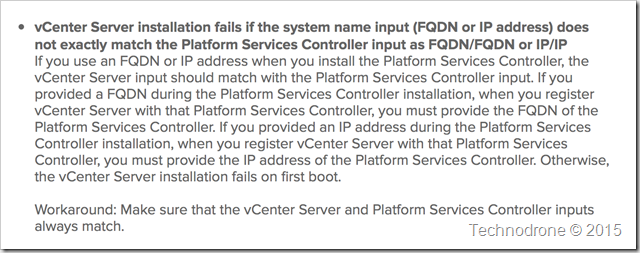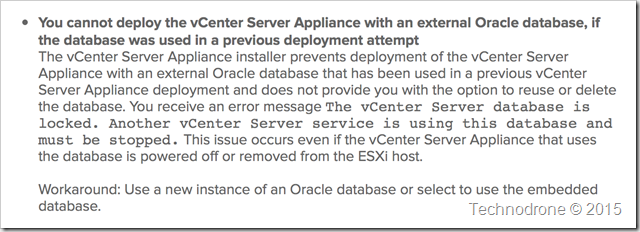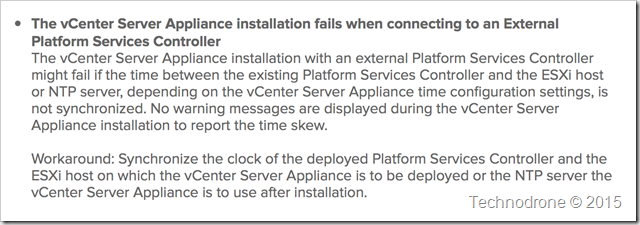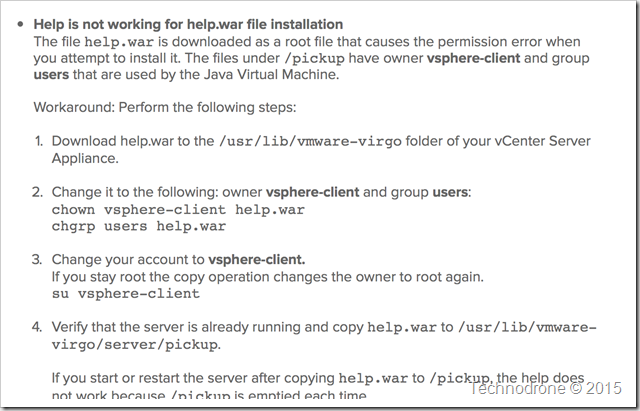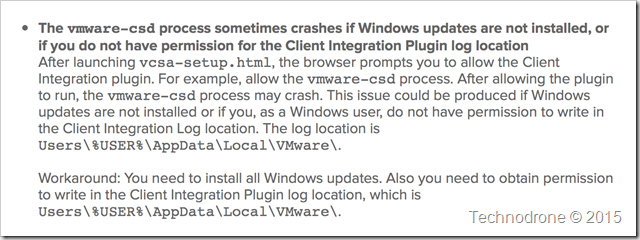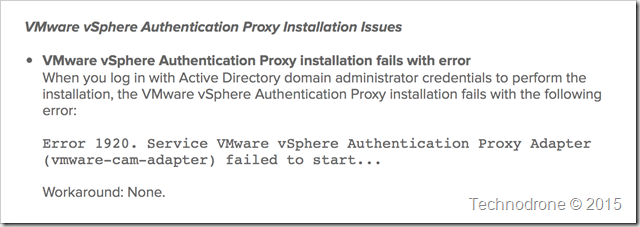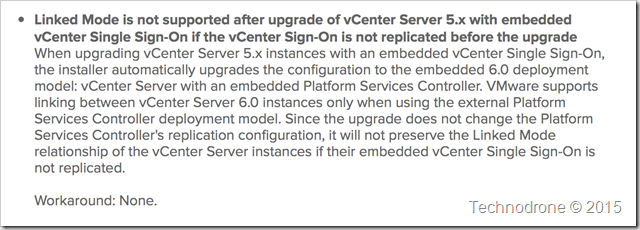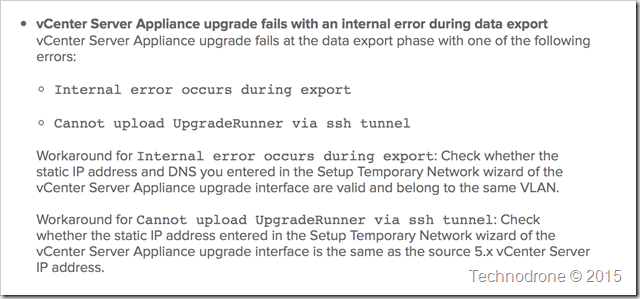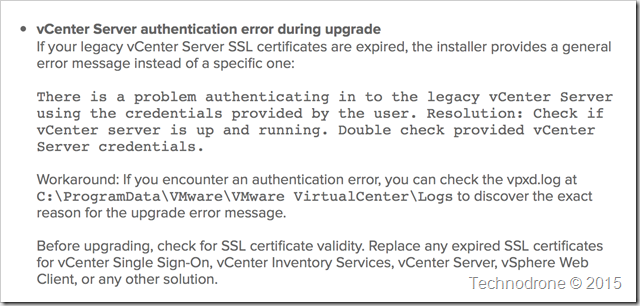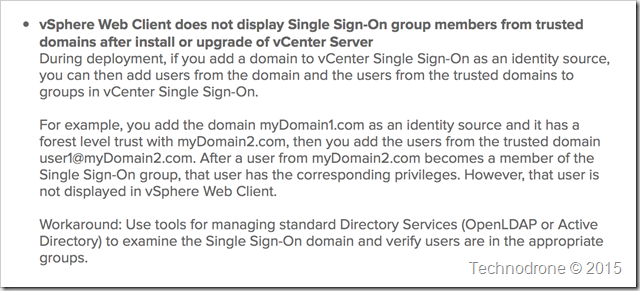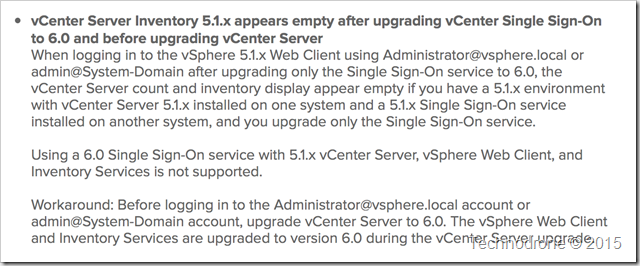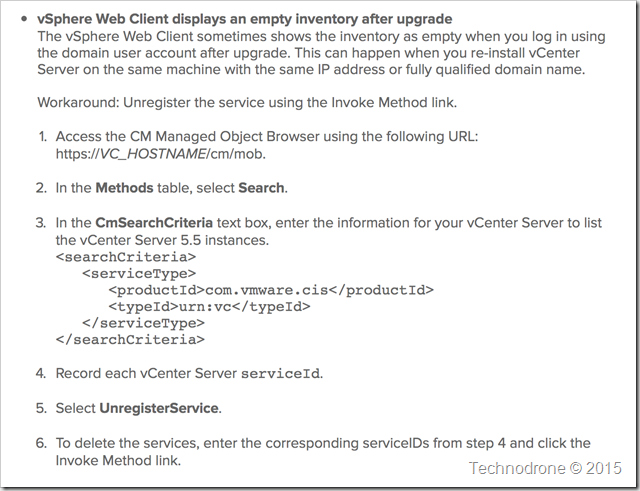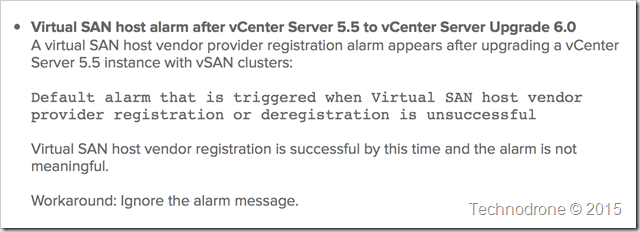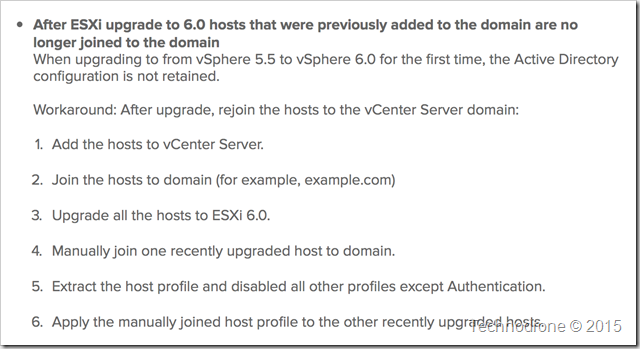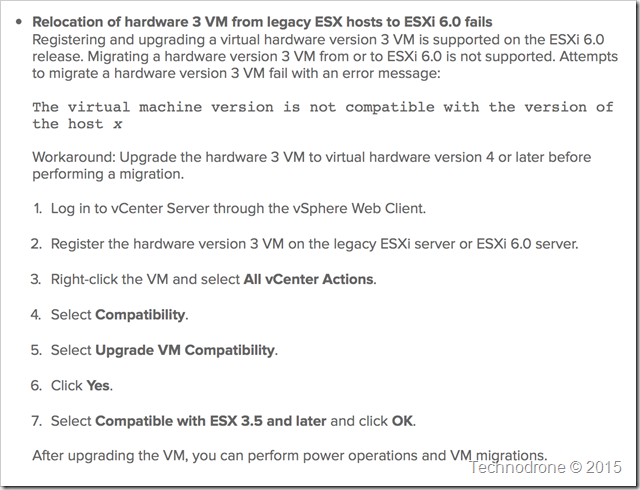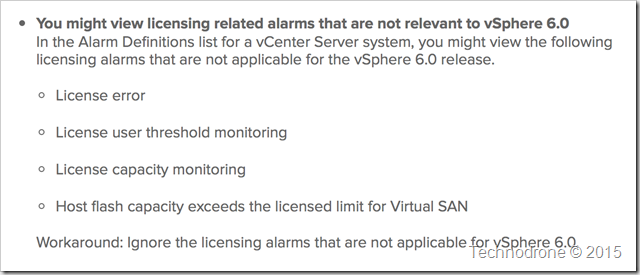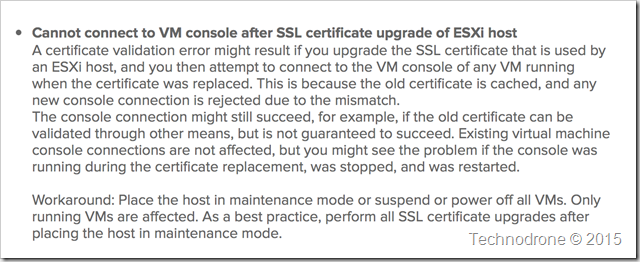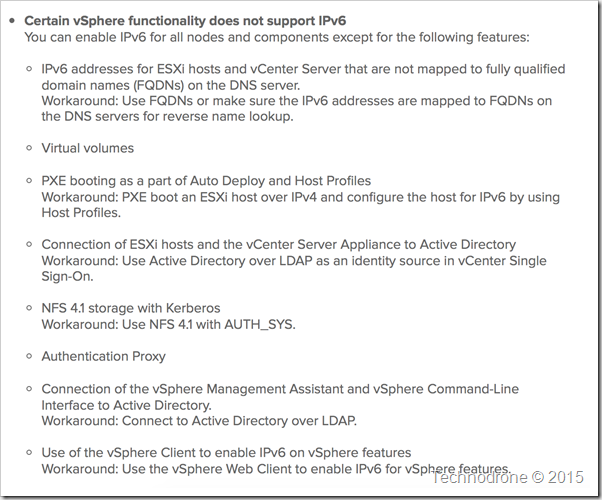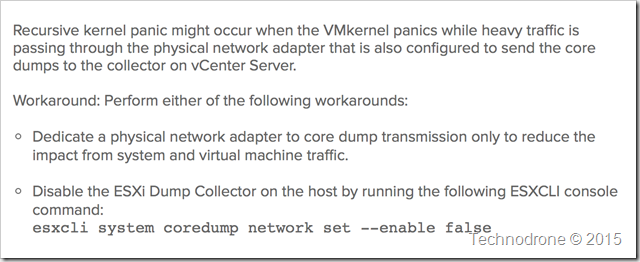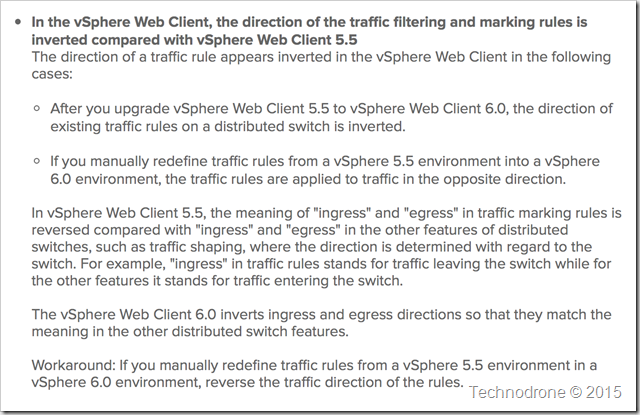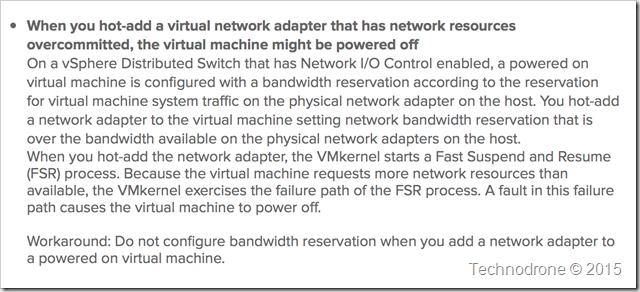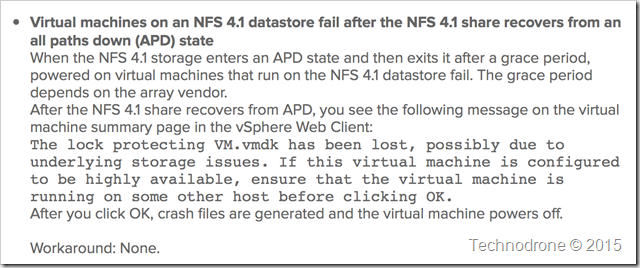vSphere 6.0 is here. Read the Release Notes!!
I make the time whenever a product is released to go over the release notes – because there are always tidbits of information there that you should know about and usually it will save you time in the long run – understanding what you are getting into and staying out of trouble.
I have traditionally done this for vSphere 5.1, 5.1.0a and 5.5.
So as always, the first things I do when a new version is released is:
- Download the bits - of everything..
- Download the documentation
- Go over the Release Notes
There is of course a KB article that states a number of caveats as well - Important Information before upgrading to vSphere 6.0 (2110293)
So here are my takeaways and some questions regarding the 6.0 Release from yesterday (and forgive the humoristic remarks – because live like a box of chocolate – so you should have some fun – if you can)
Disclaimer:
These are my own thought and ramblings. I think they should be questions you should be asking VMware, your TAM and the support people. These are not the only items in the Release Notes - just those that got my attention. Your mileage may differ and there may be other things that are of importance to in the original document.
Takeaways:
If you are a Cisco customer and using the 1000V – then I would test this very well, contact VMware and Cisco support and clarify what exactly this means for me as the end user.
Questions:
Does this broaden the rift between Cisco (ACI) and VMware (NSX)?
Takeaways:
It took me a while to understand this. So a remote Oracle DB is not supported for the appliance – but will be supported for the Windows version.
So it seems that VMware is all in for a integrated database for vCenter – I just hope that until vSphere 7.0 they get all the supporting tools and availability right.
Spell Checking always helps…
Takeaways:
It seems it is an all or nothing here. Of course it is a very good idea to backup up the database before making any changes to vCenter.
Questions:
Exactly how am I supposed to backup the database? Where is it stored? It would be nice to have a KB describing the steps.
Takeaways:
Long live IPv4!! There are still pieces there that need IPv4 – probably code that will take time to rip and replace – but hey – who has a pure IPv6 environment – raise your hand..
Questions:
Why not run a check beforehand to see if the patch has been installed? And if not – through an error?
Takeaways:
Don’t you love cryptic messages?? It does make sense though..
Takeaways:
BRAVO!!! Time sync is critical
Questions:
Why not pass the parameter from one part of the installation to the other??
Takeaways:
Who said reverse lookup zones are dead? When using IPv6 – always use a FQDN!!!
Takeaways:
Are you kidding me?
Questions:
VMware have been building windows installers for how many years now? What the hell happened here?
Questions:
- Why not do the basic cleanup after installing? This should have been perfected by now.
- And exactly would a reboot solve this?
Questions:
Most domain service accounts I know of are described as [email protected] or Domain\Username – both of those options have a @ or a \ in them – so how am I supposed to use a domain service account??
Takeaways:
What is the difference between a hostname and a system network name?
Takeaways:
This is a great one. If your VCSA installation craps out on you somehow, the only way to point it to an external Oracle instance – is to either install a new one – or manually delete the database that was created.
Questions:
Why not allow the option to re-use or delete the database?
Takeaways:
- The teams doing the Windows and Appliance installers are not the same – because this is covered in the Windows version
- NTP! NTP! NTP!!!!
Takeaways:
Another whopper. VMware tools trumps NTP! And you do not have the option of turning off VMware tools time synchronization. This means that everything has to point to the same NTP server.
Questions:
Why not give the user the option to turn off time synchronization like any other VM with VMware tools?
Takeaways:
IPv6 – always use an FQDN
Questions:
- If it will fail – then why give me the option to enter more than one DNS server?
- How am I supposed to add these in after installation?
Questions:
Why not run these pre-checks in the installer – if you know that the installation will fail if they do not pass?
Takeaways:
Are you kidding me?
Questions:
If there is a minimum – then why not check for the minimum -
Takeaways:
This will need to be fixed every time that vCenter is restarted!
Takeaways:
More vague than that – you cannot be…
Questions:
- Which updates? I do not want to install every single update available from Windows – being specific would be much better.
Takeaways:
If the option does not work – then don’t provide it – or fix it.
Questions:
How do I verify the checksum?
Questions:
- Does that mean I cannot use Authentication Proxy?
- What are my other options?
- Will this effect my ability to upgrade?
Questions:
- If I have such a scenario – then what do I do?
- Can I upgrade?
Takeaways:
This might change the way you upgrade – should looked into with more attention
Takeaways:
- That an upgrade from 5.0.x is possible
- This should be tested thoroughly in the lab if used
Questions:
- Why are the settings not retained?
- What is the difference between 5.0.x and 5.1.x and above in this regard?
Takeaways:
- Remove them old bits
- Upgrade an old vCenter – is it worth the hassle? Rather provision a new one and point to the old database.
Questions:
Why does it not detect old products – it is after all VMware software is it not?
Takeaways:
Same VLAN only!
Takeaways:
Are you kidding me?
Questions:
- Why does it not preserve the /etc/hosts file?
- Will anything happen if I change it after installation?
- Any services that need to be restarted after the change?
Takeaways:
- SSL can cause problems
Questions:
- What happens on the vCenter Appliance? Where are the logs there?
- Why not run the check before hand?
Takeaways:
If you have a multi-domain environment with trusts – and apply permissions – then don’t rely on vCenter to tell report that they have permissions – it should work though.
Questions:
How exactly is using standard AD tools supposed to help me here? I am trying to verify vCenter permissions..
Questions:
- How does adding this to the hosts file solve it?
- What about the appliance?
Takeaways:
Mix and matching different versions does not work
Questions:
Does this mean there is no staggered upgrade?
Takeaways:
There is another MOB – I should look into it
Questions:
Has the MOB url changed?
Questions:
If the alarm is not relevant – then why is it there?
Takeaways:
The whole Active directory thing does not seem to be the most stable thing for upgrades
Questions:
Does this require any host downtime?
Takeaways:
Evidently there are still people that use old versions otherwise they would have got ridden of the support for older versions a long time ago.
Questions:
- Why not prevent/alert on this before even starting the migration?
- When are we finally going to get rid of old VM versions?
Questions:
If these alarms are not relevant – then why are they still there?
Questions:
If you went to the effort to write a warning about deprecation – then why did VMware not verify that the replacement works properly?
Questions:
When will this bug be fixed?
Takeaways:
Maintenance on Hosts should be done with no VM’s running – that is what we have vMotion and clusters for
Takeaways:
- Give this a good read
- vvols works only with IPv4
Takeaways:
Understand how this effects your environment and what changes need to be made.
Questions:
- What happens if I disable the dump collector on the host?
- Can this be automated?
- Is this supported in Host Profiles?
Takeaways:
This is a whopper as well.
Questions:
Why were the directions changed?
How do I automate the change needed to make the reversal with 6.0?
Takeaways:
This could be a problem for specific cases.
Questions:
- Is there no way to identify such a case and present an error to the user when they add a new NIC?
- Or maybe even prevent it?
Takeaways:
Test in the lab
Questions:
Does this behavior differ from NFS 3.0? If so how?
Takeaways:
- Another NFS 4.1 caveat.
- Makes me think that as with all new technologies – maybe we should wait until it is more stable and not jump into it feet first.
Questions:
- Is this a bug? By Design?
- Will it be fixed?
Takeaways:
Same as above.
Questions:
What happens to the VM’s that are currently running on the other datastores?
Takeaways:
Same as above.
Questions:
- Is it possible to alert that they are not?
- Why would different hosts use different security types?
As I am only half way through and this is turning into a really long post – I have continued here with part two.




